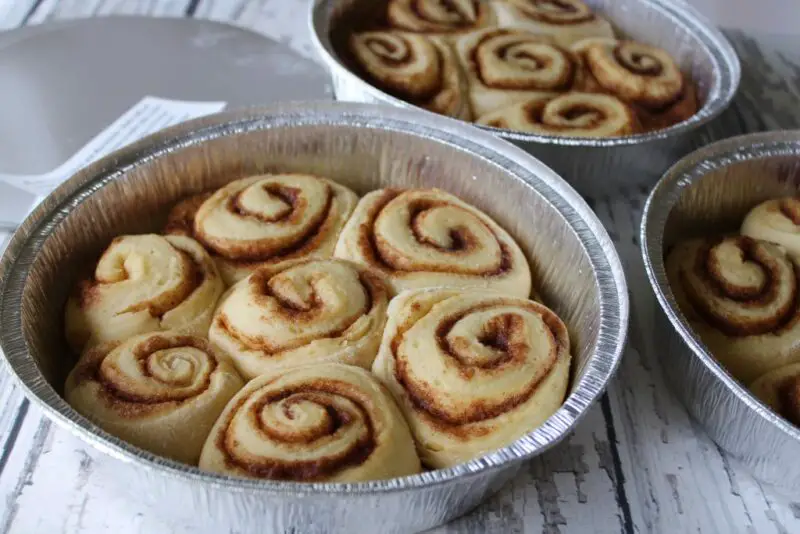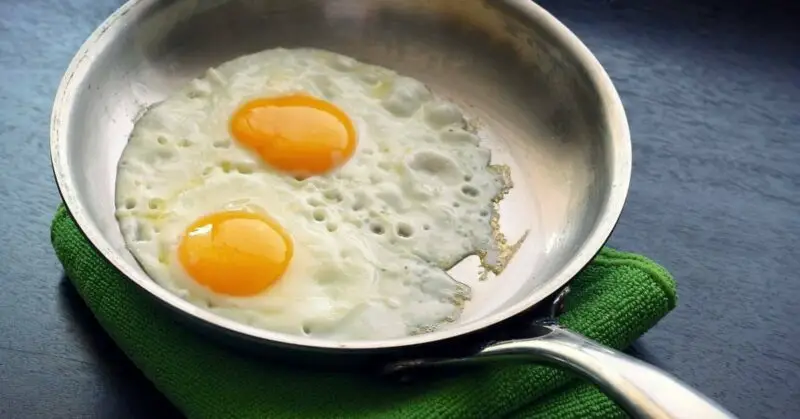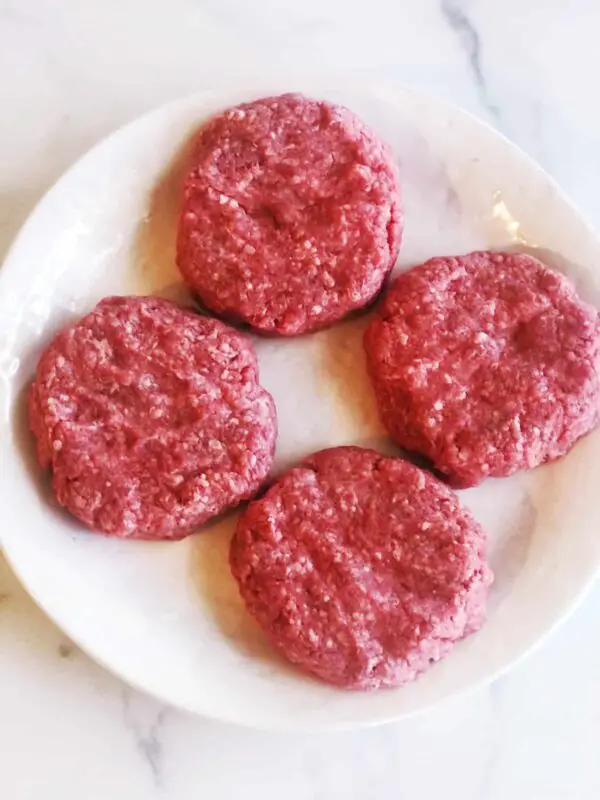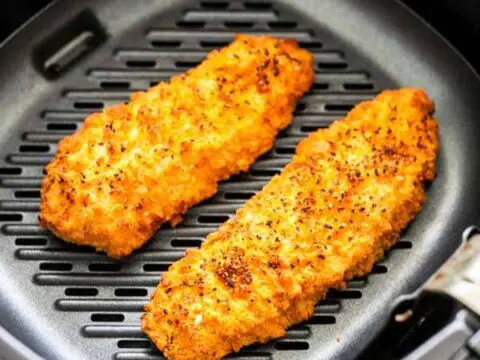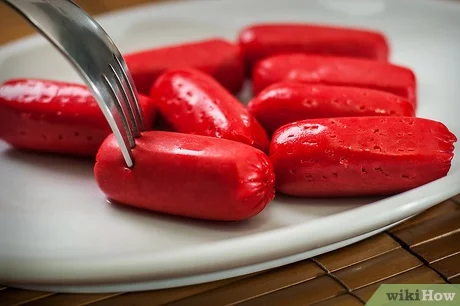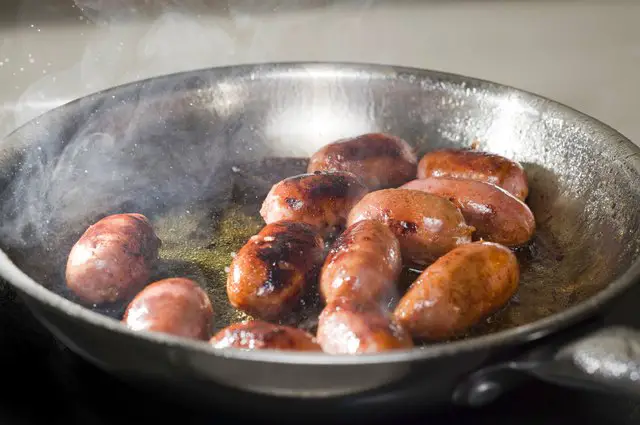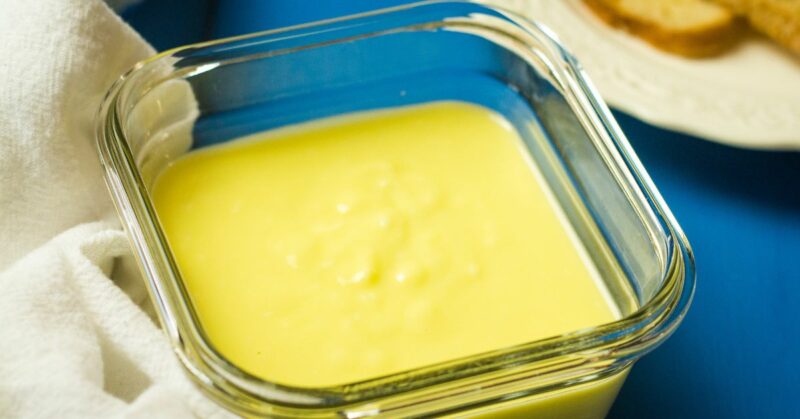When it comes to baking cinnamon rolls, choosing the right pan can make all the difference. Cinnamon rolls are a beloved pastry enjoyed by people all around the world and selecting the proper baking pan can ensure your pastry comes out perfect every time. In this article, we will explore different types of baking pans and outline which ones are best used for baking cinnamon rolls.
What are Cinnamon Rolls?
Cinnamon rolls can be described as sweet and sticky pastries made with dough, brown sugar, and cinnamon. They are a popular breakfast food enjoyed by many people around the world. Cinnamon rolls are usually topped with icing or frosting, which adds flavor and texture to the baked product.
Importance of Using the Right Type of Pan When Baking Cinnamon Rolls
To get the perfect cinnamon roll, it is essential to use the right type of pan. Different types of pans can have an impact on how your cinnamon rolls cook and the way they taste. Using a non-stick pan will affect how much butter or oil you need to use in preparing the pan. The pan’s size will also determine how many cinnamon rolls you can cook at once, while the level of browning each cone gets significantly affected by the type of pan used during cooking.
Different Types of Baking Pans
There are several different types of baking pans available that work well for baking cinnamon rolls:
- Non-stick Pans: These pans have a special coating that reduces food sticking to them. They require less oil or butter in preparation and prevent over-browning due to their heat distribution feature.
- Glass Pans: These pans retain heat for long periods and provide an evenly cooked dish if not too thin. Glass pans allow you to see through them and check how the baking process is going on, leaving you entirely in control.
- Metal Pans: Aluminum or steel/metal-based pans provide excellent heat conductivity and browning options. Metal pans are also durable and long-lasting, but beware of over-browning if you don’t pay attention to thicknesses or other cook selection factors.
- Silicone Pans: These flexible, easy-to-use pans resist sticking when baking sticky and gooey cinnamon rolls. However, silicone pans don’t brown the cinnamon rolls as evenly as metal pans.
Factors to Consider When Choosing a Baking Pan for Cinnamon Rolls
The following factors should be kept in mind when choosing what type of pan to use for your cinnamon rolls:
- The size of the cinnamon rolls: Some pans work better with smaller or larger cinnamon rolls. Ensure that the pan’s size accomodates the dough volume needed based on your recipe measurements .
- The number of cinnamon rolls to be baked at once: The amount of cinnamon rolls you bake can affect the pan’s size choice regarding how many fit in one go-unit into your oven as well.
- The level of browning preferred: Some people like their cinnamon rolls crispy with a darker color than others, so ensure that choose a pan that will give you what you want.
- Type of oven available: Your oven setup plays a role in selecting which pan to use because ovens vary widely in terms of temperature stability, heat distribution performance during cooking cycles, and responsiveness to changes like opening/closing doors. Consult your oven manual to avoid using an incompatible pan with your oven, which could cause uneven cooking or safety hazards.
Pros and Cons of Each Type of Baking Pans for Cinnamon Rolls
Non-stick Pans
Non-stick pans have several advantages and drawbacks that need to be reviewed before selecting this type of pan to cook with:
- Benefits:
- Easy to clean up since food doesn’t stick to the surface
- Requires less oil or butter to prepare the pan
- Prevents over-browning due to their heat distribution feature.
- Drawbacks:
- The coating on the pan may wear off over time after repeated uses
- Might not give the desired browning effect based on dough preparation techniques.
Glass Pans
There are specific benefits and drawbacks to using glass pans for baking cinnamon rolls. They include:
- Benefits:
- Retains heat longer than metal counterparts, helping you achieve an even baking process that works well for certain types of dough
- Dishwasher safe and easy to clean up when compared with many other pans, including metal variants.
- You I can see through the glass to check on how the cinnamon rolls are baking. Your oven light may provide enough visibility for you without opening the door at alltimes. This helps ensure your cinnamon rolls don’t burn and that they cook thoroughly.
- Drawbacks:
- Thin glass pans will often crack under heat stress since their material makeup is more fragile and prone to breakage than other baking pans.
- Does not brown as well as metal pans or ridge-bottomed loaf pans. Bakers aiming to achieve a crispy outer crust may be better off picking a different type of tray for optimal results.
Metal Pans (Aluminium, Steel, and Cast Iron)
Metal pans also have their advantages and disadvantages when used for cooking cinnamon rolls. Some of these are:
- Benefits:
- Provides excellent heat conductivity and browning options that most sports crave for achieved through aluminum, steel, or cast iron materials. This results in achieving visible textural layers with cinnamon rolls exterior if managed well.
- You can achieve crispy edges, which is a highly sought-after feature unique to this kind of pan.
- The long-lasting durability of metal baking pans tends to make them desirable for usage repeatedly provided you take care in cleaning and protecting against oxidation.
- Drawbacks:
- The cinnamon rolls in metal pans might over-brown quickly depending on the thicknesses or recipe/doough consistency used. This scenario can cause them to become rubbery or hard if left unchecked throughout baking.
- Depending on density, some types of metal can cause uneven cooking with your cinnamon rolls making them tough in some parts, while also affecting how much time they will spend inside the oven before perfect cooking..
Silicone Pans
Silicon pans represent the last category, with several advantages and disadvantages as detailed below:
- Benefits:
- The highly flexible and easy to turn the pan inside out, allowing for easy removal of the cinnamon rolls without damaging the shape of your rolls.
- Resistant to sticking, making it easy to get perfect shapes even after baking.
- Easy to wash by hand or place in a dishwasher for hassle-free cleaning.
- Drawbacks:
- It can be challenging to handle when wet so you need to take extra care in handling and avoiding burns if you reach into an oven to pick up a hot silicone baking pan out.
- Does not brown the cinnamon rolls as well as metal pans because they absorb a lot of moisture which marshmallows up the outer texture.
Best Baking Pan for Cinnamon Rolls Based on Preference and Needs
In selecting which pan to use when baking cinnamon rolls, here are some suggestions tailored to different preferences:
- Crispy edges and firm crust: Use metal baking pans especially those that have ridges on the bottom of the pan. Ridges help crisp up outer layers by allowing moisture release leaving you with golden crispy edges.
- For Healthy options: Use non-stick baking pans, which require less oil or butter in their preparation but still produce flavorful cinnamon rolls. This helps reduce calorie loads while retaining enough flavor distinctiveness within each cinnamon roll that you can feel satisfied eating.
- Crispy crust and no sticking: Choose glass or ceramic-based baking dishes. They retain heat for longer, creating a crispy outer crust. At the same time, they don’t stick as much as some other pans like Silicone pans or Teflon non-stick varieties do.
- Avoid burnt cinnamon edges: Use silicone baking pans due to their no-Stick features ; they help keep the cinnamon roll moist enough without getting harsh or excessively dry. Opt for these pans when you want to avoid burnt cinnamon edges of your rolls.
Tips for Using Your Preferred Baking Pan
To get perfect cinnamon rolls every single time, you must use your preferred bake pan correctly. Here are some tips that will help:
- Preheat your oven: Always preheat your oven before putting in the cinnamon rolls. Preheating allows the pan to heat up right to its base, so that contents evenly cook from below concurrently with other surfaces providing consistent textures on all sides
- Follow recipe instructions: Follow the recipe’s instructions on how much dough volume should be loaded onto each section if working with subdivided shaped zones in addition to picking an appropriate bake pan size that correlates well with amounts specified by the recipe.
- Browning techniques: Apply egg wash on top of your rolls to get a glossy finish and promotes browning during cooking. You can also make small slits along the side of the rolls before baking to allow air flow to improve oven performance and consistent coloring while also letting more flavors out into the atmosphere
- Do not crowd: Avoid overcrowding in an attempt to bake as many at once by separating each cinnamon roll if possible. This ensures that every single one gets enough space to expand, cook, and brown properly without sticking to one another or uneven cooking.
Conclusion
We hope this article has been helpful in providing guidance on the best type of bake pan to use when making cinnamon rolls. Whether you prefer silicone, glass, metal, or non-stick pans for your baking needs, it’s important always to remember that getting the perfect cinnamon roll requires not only proper selection of a bake pan but also some skill in managing dough preparation techniques and oven temperature variation. Using these tips will give you the best chance at creating a beautiful batch of tasty cinnamon rolls!
References
- Björklund, E. (2006). Baking with the Stork: Illustrated recipes from Sweden’s Most Famous Baker. Skyhorse Publishing.
- Harris, D. (2018). Perfect Pan Pizza: Square Pies to Make at Home, from Roman, Sicilian, and Detroit, to Grandma Pies and Focaccia [A Cookbook]. Potter/Ten Speed/Harmony/Rodale.
- Krystina Castella (2011), A World of Cake: 150 Recipes for Sweet Traditions from Cultures Near and Far; Tuttico Publishing.
Frequently Asked Questions
What makes a perfect pan for cinnamon rolls baking?
The perfect pan for cinnamon roll baking is one that allows for even heating, helps create a golden brown crust on the rolls, and is easy to clean. A pan that is too thin or flimsy may lead to uneven baking and burnt edges.
Can I use a glass baking dish for cinnamon rolls?
Yes, you can use a glass baking dish for cinnamon rolls. However, glass may take longer to heat up than other types of pans, leading to longer baking times. It’s essential to keep an eye on your rolls to avoid overbaking or burning.
Should I line my baking pan with parchment paper when making cinnamon rolls?
Lining your baking pan with parchment paper when making cinnamon rolls is entirely optional. However, it can make cleanup easier and help prevent the rolls from sticking to the pan.
What size of a baking pan should I use for cinnamon rolls?
When making cinnamon rolls, you’ll typically want to use either an 8 or 9-inch square baking pan or a 9-inch round cake pan. These sizes work well because they provide enough space for the rolls to expand while creating uniformity in the cooking process. If you’re making more significant batches of cinnamon rolls, a larger-sized baking sheet will also work well.
